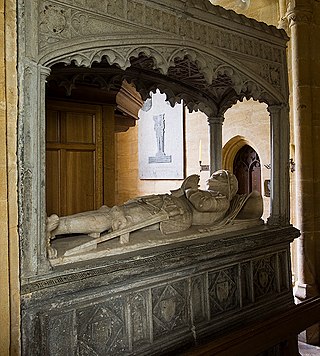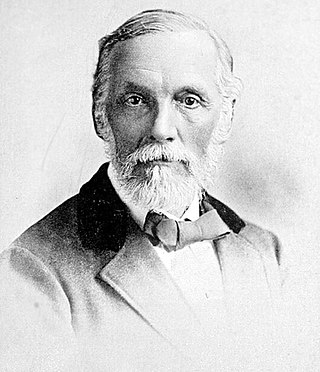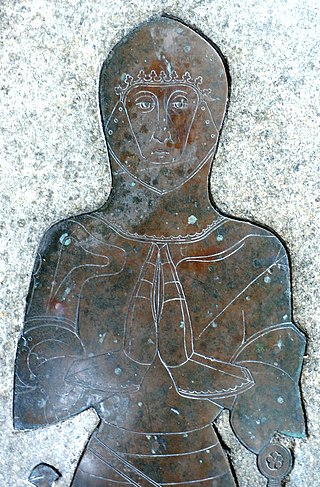Related Research Articles

Sherborne Abbey, otherwise the Abbey Church of St. Mary the Virgin, is a Church of England church in Sherborne in the English county of Dorset. It has been a Saxon cathedral (705–1075), a Benedictine abbey church (998–1539), and since 1539, a parish church.

Sherborne is a market town and civil parish in north west Dorset, in South West England. It is sited on the River Yeo, on the edge of the Blackmore Vale, 6 miles east of Yeovil. The parish includes the hamlets of Nether Coombe and Lower Clatcombe. The A30 road, which connects London to Penzance, runs through the town. In the 2011 census the population of Sherborne parish and the two electoral wards was 9,523. 28.7% of the population is aged 65 or older.

Shaftesbury Abbey was an abbey that housed nuns in Shaftesbury, Dorset. It was founded in about 888, and dissolved in 1539 during the English Reformation by the order of Thomas Cromwell, minister to King Henry VIII. At the time it was the second-wealthiest nunnery in England, behind only Syon Abbey.

Sherborne School is a public school located beside Sherborne Abbey, in the parish of Sherborne, Dorset. The school has been in continuous operation on the same site for over 1,300 years. It was founded in 705 AD by St Aldhelm and, following the dissolution of the monasteries, re-founded in 1550 by King Edward VI, making it one of the oldest schools in the United Kingdom. Sherborne is one of the twelve founding member public schools of the Headmasters' and Headmistresses' Conference in 1869 and is a member of the Eton Group and Boarding Schools Association.

Clifton Maybank is a hamlet and civil parish in the English county of Dorset. It is located about a mile southwest of the village of Bradford Abbas. It is known for Clifton Maybank House, a country house with surviving Tudor fabric. Dorset County Council estimate that the population of the parish in 2013 was 40.

Abbotsbury Abbey, dedicated to Saint Peter, was a Benedictine monastery in the village of Abbotsbury in Dorset, England. The abbey was founded in the 11th century by King Cnut's thegn Orc and his wife Tola, who handsomely endowed the monastery with lands in the area. The abbey prospered and became a local centre of power, controlling eight manor houses and villages. During the later Middle Ages, the abbey suffered much misfortune. In the time of the dissolution of the monasteries, the last abbot surrendered the abbey and the site became the property of Sir Giles Strangways.
Sir Piers Dutton was the lord of the manor of Dutton from 1527 until his death. He was involved in the closing of Norton Abbey during the Dissolution of the Monasteries in 1536. He started rebuilding Dutton Hall in 1539.
Events from the 1530s in England.
Sir John Horsey JP was a knight of Henry VIII and Lord of the Manors of Clifton Maubank and South Perrott.

Forde Abbey is a privately owned former Cistercian monastery in Dorset, England, with a postal address in Chard, Somerset. The house and gardens are run as a tourist attraction while the 1,600-acre (650 ha) estate is farmed to provide additional revenue. Forde Abbey is a Grade I listed building.
Sir George Horsey of Clifton Maybank, Dorset was an English landowner engaged in ambitious industrial and land reclamation schemes.
Sir Walter Buckler was a diplomat, chamberlain of the household to Lady Elizabeth, later Queen Elizabeth I, and private secretary to Catherine Parr, the sixth wife of King Henry VIII.

Sir Giles Strangways, of Melbury House, Melbury Sampford, and of Abbotsbury, both in Dorset, was an English politician.

Sir Thomas Denys of Holcombe Burnell, near Exeter, Devon, was a prominent lawyer who served as Sheriff of Devon nine times between 1507/8 to 1553/4 and as MP for Devon. He acquired large estates in Devon at the Dissolution of the Monasteries.

Sir John Arundell (1474–1545) Knight Banneret, of Lanherne, St Mawgan-in-Pyder, Cornwall, was "the most important man in the county", being Receiver-General of the Duchy of Cornwall. His monumental brass in the church at St Columb Major in Cornwall was described by Dunkin (1882) as "perhaps the most elaborate and interesting brass to be found in Cornwall".

Merryfield is a historic estate in the parish of Ilton, near Ilminster in Somerset, England. It was the principal seat of the Wadham family, and was called by Prince their "noble moated seat of Meryfeild" (sic). The mansion house was demolished in 1618 by Sir John Wyndham (1558–1645), of Orchard Wyndham, a nephew and co-heir of Nicholas II Wadham (1531–1609), co-founder of Wadham College, Oxford, the last in the senior male line of the Wadham family. It bears no relation to the present large 19th-century grade II listed mansion known as Merryfield House, formerly the vicarage, immediately south of St Peter's Church, Ilton.

William Henry Hamilton Rogers, Fellow of the Society of Antiquaries of London (FSA),, of Ridgeway Row in Colyton, Devon, was an English historian and antiquarian who specialised in the West Country of England. He frequently worked with the illustrator Roscoe Gibbs.

Sir William Wadham (c.1386–1452) of Merryfield in the parish of Ilton, Somerset and Edge in the parish of Branscombe, Devon came from a West Country gentry family with a leaning towards the law, who originally took their name from the manor of Wadham in the parish of Knowstone, between South Molton and Exmoor, north Devon.

John Ridgeway of Abbots Carswell and Tor Mohun in Devon, was a lawyer who served as a Member of Parliament, twice for Dartmouth in 1539 and 1545 and twice for Exeter in 1553 and 1554.
References
- 1 2 3 4 5 6 "Oxford DNB article: Horsey Family (subscription needed)". Oxford University Press. 2004. Retrieved 13 April 2009.
- ↑ Rogers, William Henry Hamilton (1888). Memorials of the West. James G. Commin. p. 53.
- ↑ Rogers, William Henry Hamilton (1888). Memorials of the West. James G. Commin. p. 53.
- ↑ "Sherborne Abbey, Dorset, – Sherborne Town". Sherbornetown.com. Retrieved 2 March 2019.
- ↑ "Sherbornehorsey". Archived from the original on 8 November 2007. Retrieved 13 April 2009.